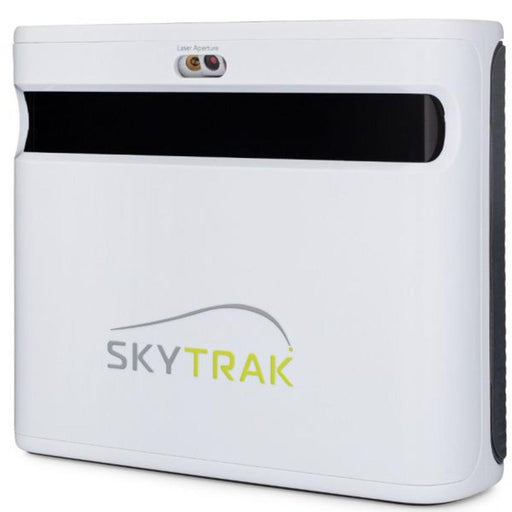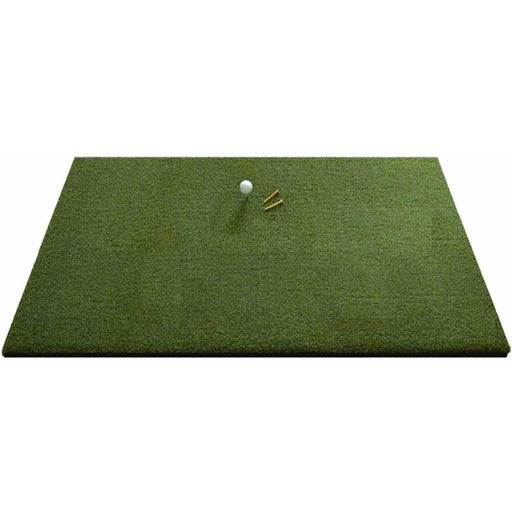
The Power of Golf Simulators and Launch Monitors
In recent years, the world of golf has witnessed a technological revolution with the advent of golf simulators and launch monitors. These tools offer invaluable insights into every aspect of your game, from swing mechanics to ball flight characteristics. However, many golfers find themselves overwhelmed by the plethora of data presented to them. In this guide, we'll delve into how to understand and effectively utilize the data provided by golf simulators and launch monitors to enhance your game on the course.
Understanding the Basics:
Before we dive into the specifics, let's establish a foundational understanding of what golf simulators and launch monitors are and how they work. Golf simulators replicate the experience of playing golf indoors by utilizing high-speed cameras, sensors, and sophisticated software to track the flight of the ball and provide feedback on various parameters such as ball speed, launch angle, and spin rate. On the other hand, launch monitors are portable devices that measure key metrics of your swing and ball flight, typically used outdoors on the driving range.
Key Metrics to Analyze:
- Clubhead Speed: This metric represents the speed at which the clubhead is moving at impact. Increasing clubhead speed can lead to greater distance off the tee and improved overall performance.
- Ball Speed: Ball speed is the speed at which the golf ball is traveling immediately after impact with the clubface. It is influenced by factors such as clubhead speed, angle of attack, and the efficiency of contact.
- Launch Angle: The launch angle refers to the angle at which the ball takes off from the clubface relative to the ground. Finding the optimal launch angle can maximize distance and trajectory control.
- Spin Rate: Spin rate indicates the amount of backspin or sidespin on the ball after impact. Balancing spin rate is crucial for achieving optimal distance and accuracy.
- Smash Factor: Smash factor is a ratio of ball speed to clubhead speed, providing insights into the efficiency of energy transfer from the club to the ball. Higher smash factors indicate more efficient strikes.
Interpreting the Data:
Once you have collected data from your golf simulator or launch monitor, the next step is to interpret and analyze it effectively. Here are some strategies to consider:
- Identify Patterns: Look for consistent trends or patterns in your data across multiple swings or sessions. Pay attention to any deviations from your baseline metrics.
- Compare Performance: Compare your metrics to those of professional golfers or benchmarks for your skill level. This can help you identify areas for improvement and set realistic goals.
- Focus on Key Areas: While it's tempting to analyze every metric in detail, focus on a few key areas that have the greatest impact on your performance, such as clubhead speed or ball striking consistency.
Utilizing the Insights:
Now that you have a better understanding of your data, it's time to put that knowledge into action:
- Targeted Practice: Use the insights gained from your data analysis to tailor your practice sessions. Focus on drills and exercises designed to address specific areas of improvement identified by your metrics.
- Adjust Equipment: Based on your data, consider making adjustments to your equipment, such as shaft flex or club loft, to optimize performance and achieve better results on the course.
- Track Progress: Continuously monitor your metrics over time to track your progress and ensure that you are moving closer to your goals. Set regular intervals for reassessment to gauge the effectiveness of your training regimen.
Your Golf Potential:
Golf simulators and launch monitors offer a treasure trove of data that can unlock your full potential as a golfer. By understanding how to interpret and utilize this data effectively, you can make informed decisions to improve your game and achieve your desired results on the course. Remember, the key lies not just in collecting data, but in using it as a tool to drive meaningful progress and performance enhancement.

Have Questions About Golf Simulators?
Our expert team is here to help you find the perfect golf simulator for your needs.
Featured products
-
SkyTrak+
Original price $2,995.00 - Original price $3,145.00Original price$2,995.00 - $3,145.00$2,995.00 - $3,145.00Current price $2,995.00Introducing the SkyTrak+ Launch Monitor: Unmatched Accuracy and Advanced Features Experience a new level of precision and innovation with the SkyTr...
View full details -
ProTee Majestic Simulator Package
Original price $9,618.00 - Original price $13,848.00Original price$9,618.00 - $13,848.00$9,618.00 - $13,848.00Current price $9,618.00ProTee Majestic Golf Simulator Package: Elevate Your Indoor Golf Experience Transform your home or business into a golfer’s dream with the ProTee M...
View full details -
Eagle Golf Mat
Original price $370.00 - Original price $1,130.00Original price $370.00$370.00$370.00 - $1,130.00Current price $370.00Introducing the Eagle Golf Mat: The Ultimate Golf Experience Are you passionate about golf and demand nothing but the very best in your practice eq...
View full details -
Retractable HomeCourse® Golf ProScreen 180
Original price $2,299.00Original price $2,299.00 - Original price $2,299.00Original price $2,299.00Current price $1,999.00$1,999.00 - $1,999.00Current price $1,999.00HomeCourse® Golf ProScreen 180 HomeCourse® Golf ProScreen 180 is a retractable golf screen and enclosure. HomeCourse® Golf ProScreen 180's ballisti...
View full details -
The Augusta V2 4'x12' 2 Cups
Original price $399.00Original price $399.00 - Original price $399.00Original price $399.00Current price $329.00$329.00 - $329.00Current price $329.00The Augusta is one of Big Moss’ traditional models. It offers unmatched versatility for teaching and year round practice. Make a long-term investme...
View full details





